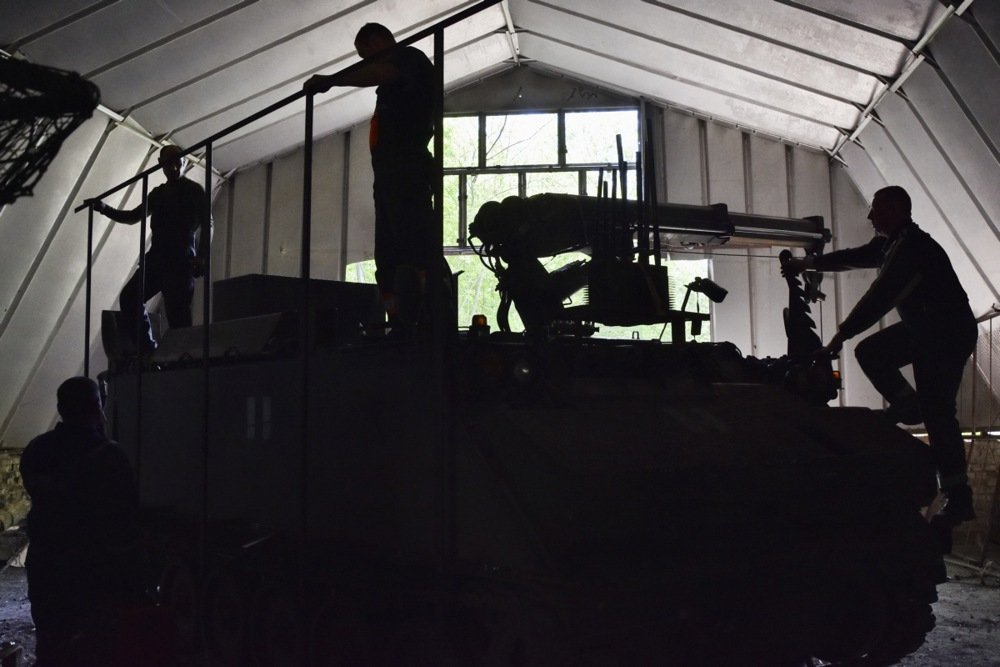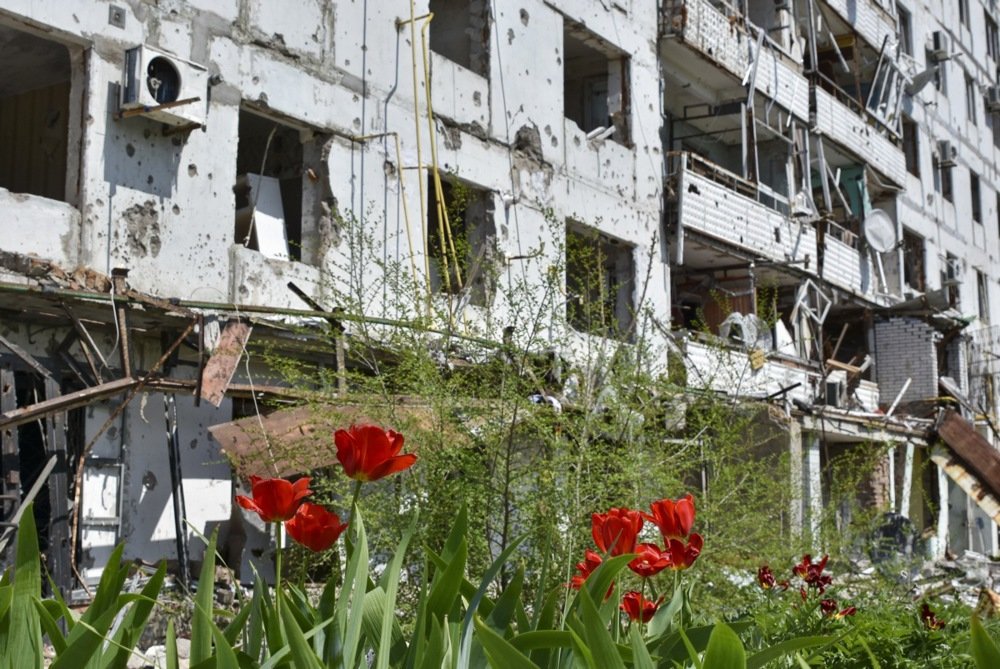After more than three years of war, the prospects of peace for Ukraine remain slim. There is no obvious credible pathway even to a ceasefire, given Russia’s refusal to extend a brief and shaky truce over Easter. This, despite the US, UK and Ukraine all signalling their support for this idea.
And even if the considerable hurdles impeding a ceasefire deal could be overcome, a more fundamental problem would remain. None of the key players in the conflict appear to have a plan for an agreement that is likely to be acceptable to Kyiv and Moscow.
Previous plans, such as a joint proposal by China and Brazil in May last year which was supported by a Chinese-led “Friends of Peace” group were primarily focused on a ceasefire as a stepping stone to negotiations about an actual peace agreement.
For the emerging European coalition of the willing, it is important to keep Ukraine in the fight while they build up their own defences.
This and other plans were all light on detail of what a peace deal between Russia and Ukraine would entail but were nonetheless roundly rejected by Ukraine and its Western allies as favouring Russia. Given that a ceasefire would simply freeze the front lines and very likely make them permanent with or without a subsequent peace agreement, this was not an unreasonable position.
What Ukraine proposed instead, however — and what its Western allies backed, at least rhetorically — was hardly more viable. The peace plan proposed by Ukrainian President Volodymyr Zelensky in December 2022 was already on life support at the time of the first Summit on Peace in Ukraine in Switzerland in June 2024.
Only 84 of the 100 delegations attending the summit, out of 160 invited, supported a watered-down version of Zelensky’s plan in their final communiqué, and there was no agreement on a follow-up meeting. Ukraine’s peace plan was clearly dead in the water.

Ukrainian servicemen hold positions in the Zaporizhzhia region, 24 April 2025. Photo: EPA-EFE/65 MECHANISED BRIGADE
Ukraine then proposed an “internal resilience plan”. With its focus on ensuring that the country can survive a long war of attrition with Russia, this is anything but a peace plan.
But it serves Kyiv’s needs to avoid an unconditional surrender to Moscow. This is also high on the agenda for Ukraine’s European allies who remain committed to supporting Kyiv.
For the emerging European coalition of the willing, it is important to keep Ukraine in the fight while they build up their own defences. They face the possibility of a new international order in which the world might well be carved up into US, Russian and Chinese spheres of influence.
At present, Putin has few incentives to settle for less than his maximum demands and stop a war that he thinks he is still able to win on the battlefield.
Such a carve-up is at the heart of efforts by US President Donald Trump. Trump is trying to secure a ceasefire between Russia and Ukraine as well as a deal that would give the US privileged access to Ukrainian resources.
Having initially fallen apart during an extraordinarily acrimonious press conference in the White House on 28 February, this deal now appears to be relatively close to conclusion.
The ceasefire deal Trump appears to envisage would divide Ukraine itself into spheres of influence according to a plan recently suggested by Trump’s special envoy for Ukraine, Keith Kellogg. Yet even such a pro-Moscow arrangement that would offer Putin control of 20% of Ukraine continues to elude negotiators.
At present, Putin has few incentives to settle for less than his maximum demands and stop a war that he thinks he is still able to win on the battlefield, particularly given Trump’s unwillingness to exert any meaningful pressure on Russia.
At times, it now appears more likely that Trump will simply abandon his efforts to end the fighting in Ukraine. From a Russian perspective, this would be preferable to a ceasefire that freezes the conflict but doesn’t lead to a peace deal reflecting Moscow’s demands.
For the West, the reality that a peace agreement is close to impossible on terms satisfying all sides has become a self-fulfilling prophecy.
The likely calculation in the Kremlin is that even if the 2026 mid-term elections in the US water down Trump’s power, that still leaves two more years to conquer more Ukrainian territory. Should Washington then make another push for a ceasefire, Moscow could claim any additional conquests as a price for Ukraine to pay for a settlement.
Even if Trump does not walk away from the negotiations now, and even if his special envoy Steve Witkoff ultimately manages to cobble together a deal, this will more likely look like a ceasefire than like a peace agreement.
The simple reason for this is that Russia’s and Ukraine’s positions on an acceptable outcome have not shifted. Putin remains committed to the full annexation of four complete Ukrainian regions as well as retaining Crimea. Zelensky has repeatedly ruled out territorial concessions and is broadly supported by Ukrainians in this stance.

Tulips bloom near a war-damaged building in the city of Orikhiv, in Ukraine’s Zaporizhzhia region, 24 April 2025. Photo: EPA-EFE/65 MECHANISED BRIGADE
For the West, the reality that a peace agreement is close to impossible on terms satisfying all sides has become a self-fulfilling prophecy. To the extent that there are any joint efforts by Ukraine, the US and the European coalition of the willing, they are completely centred on a workable ceasefire.
At a meeting of foreign ministers and high-level officials in Paris on 17 April, discussions were focused on making such a ceasefire sustainable.
Investing everything in a ceasefire deal might turn out not just a self-fulfilling but a self-defeating prophecy for Ukraine and its supporters.
While details of how this can be achieved remain unclear, the fact that there now appears to be a more inclusive negotiations track signals progress, at least on the process of negotiations. Whether this will lead to an actual breakthrough towards a sustainable ceasefire, however, will depend on their substance and whether Ukraine and Russia can ultimately agree on terms about disengagement of forces, monitoring, and guarantees and enforcement mechanisms.
This is an already incredibly high bar, and the bar for a subsequent peace agreement is higher yet. In the current stage of Russia’s war of aggression against Ukraine, a ceasefire is clearly a precondition for a peace agreement. But the sole focus on the former will not make the latter any more likely.
What’s more, given Russia’s track record of reneging on the Minsk ceasefire agreements of September 2014 and February 2015, investing everything in a ceasefire deal might turn out not just a self-fulfilling but a self-defeating prophecy for Ukraine and its supporters.
Stefan Wolff is a Professor of International Security at the University of Birmingham and Tetyana Malyarenko is a Professor of International Relations at the Odesa Law Academy.
This article was first published in The Conversation. Views expressed in opinion pieces do not necessarily reflect the position of Novaya Gazeta Europe.
Join us in rebuilding Novaya Gazeta Europe
The Russian government has banned independent media. We were forced to leave our country in order to keep doing our job, telling our readers about what is going on Russia, Ukraine and Europe.
We will continue fighting against warfare and dictatorship. We believe that freedom of speech is the most efficient antidote against tyranny. Support us financially to help us fight for peace and freedom.
By clicking the Support button, you agree to the processing of your personal data.
To cancel a regular donation, please write to [email protected]

